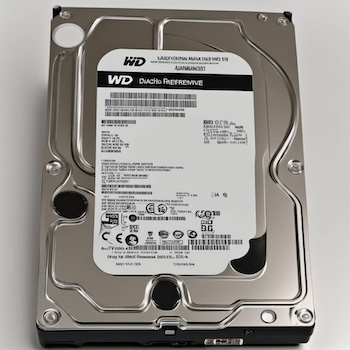How The Hard Drive Recovery Process Works
Welcome to Data Clinic Ltd
Established in 2002 Data Clinic are the UK’s leading data recovery company, providing professional data recovery services to both businesses and home users. We are able to recover data from all types of hard drive failure. Here’s how the process works.
Why Choose Data Clinic ?
Data Clinic are the UK’s #1 data recovery company. With over 20 years experience in data recovery we have unparalleled capabilities and success when it comes to recovering hard drive data. It doesn’t matter whether the fault is with an external hard drive or one inside a machine, a NAS system or multiple disk array in a RAID server, Data Clinic will recover your data. Here are some of the reasons why both businesses and home users choose Data Clinic to recover their data.
How We Work With Damaged Hard Drives
Imaging drives with media degradation The most common type of case that we work on involves hard drive media degradation, and because obtaining the best possible image of a drive is critical for data retrieval, this has become an area in which we provide unparalleled results. We have a vast array of imaging equipment which serves the majority of cases that we deal with, however, if necessary, we have the capability to ‘custom build’ a technique that ensures that the best possible clone is attained. If a sector or track is badly degraded then it is not necessarily lost, and we are able to manipulate firmware, replace heads, create custom imaging configurations such as head mapping and in some cases even increase head temperature to read previously damaged or unreadable sectors.
Interface Conversion and Bypass
Many modern hard drives have USB interfaces that are directly attached to their PCB (Printed Circuit Board); whilst this is great for consumers, it is unhelpful for data recovery, imaging and firmware manipulation. We have vast experience in using conversion boards for these models and can tap into a hard drive’s SATA data channels before the USB conversion is completed, therefore allowing us to manipulate the service area, clone the drive efficiently and bypass any potential interface issue.
Firmware Reprogramming
Modern hard drives are equipped with complex service areas that contain hundreds and in some cases thousands, of firmware modules dedicated to controlling all aspects of a hard drive. These modules range from simple SMART modules that report operational parameters, to complex, critical modules such as P and G-Lists, translators and control areas. Sometimes these modules become corrupted, damaged or can overflow with unreadable sectors, causing a variety of issues which may prevent user data access. Our expertise, equipment and skills facilitate communication with these non-user accessible service areas and allow us to diagnose, repair and in some cases replace damaged modules to regain access to allow imaging. These procedures include:
- ATA password unlocking
- WD composite module read and module re-location
- Removal of WD SED lock
- WD Slow responding fixes
- Seagate Rosewood Media Cache repair
- Advanced Seagate translator diagnosis, repair and rebuild
- Bypass Seagate ROM locks
- Full read/writing for almost all models
- Defect list diagnosis, reading, writing and repair
Encryption Bypass
Many popular external hard drives and NAS (Network Attached Storage) solutions sold by Western Digital are hardware encrypted, including the USB attached hard drives that have been converted to SATA as mentioned above. Our imagining equipment is able to read the encryption modules and then decrypt sectors to bypass such encryption and produce an image.
Working with the Head Stack Assembly
Imaging a hard drive relies on the read/write heads being functional, if these have become defective through misuse or degradation then our technician has no option but to replace the head stack assembly. This is a complex task and relies on sourcing the correct compatible parts, the experience of the technician, and in some cases the manipulation of the hard drive’s ROM and Service Area modules to complete successfully.
For example, it isn’t possible to match a donor hard drive simply using the label information on a modern WD hard drive. Specific values associated with each head need to be obtained from the ROM and a compatible donor hard drive found. The donor drive will need to match the values of a pre-researched range for each head: too high or too low a value will cause significant read errors or prevent reading from the disk surface or drive altogether. Data Clinic maintain a large library of donor hard drives and can quickly match head parameters accurately. These rules also apply to Seagate hard drives; head map and pre-amp values have to ‘match’ before a drive is compatible. This information isn’t readily available and specialist tools and analysis are required to gain such information. Sometimes even these processes aren’t sufficient to provide a drive reading, and additional ROM and firmware manipulation may be necessary. Read an example advanced hard drive data recovery here.
RAID and Complex Multiple Disk Systems
Multi disk systems such as home and business servers running RAID configurations can present complex and unique problems. We can piece the data back together from across multiple sources – you can read more on our RAID data recovery page.
Data Clinic Locations
We have many data recovery locations across the UK. You are welcome to drop off but will need to book an appointment first.
Alternatively use our Free Collection service that picks up from ANY UK address.
New London House, EC3V 9LJ
The Mount, Belfast, BT6 8DD
11, St. Paul’s Square, Birmingham, B3 1RB
Castlemead, Bristol, BS1 3AG
20 – 23 Woodside Place, Glasgow, G3 7QF
Building 3, Gelderd Road, Leeds, LS12 6LN
Horton House, Exchange Street East, Liverpool, L2 3PF
The Pavilions, Bridge Hall Lane, Bury, BL9 7NX
Rotterdam House, 116 Quayside, NE1 3DY
Victory House, 400 Pavilion Drive, NN4 7PA
The Balance, 2 Pinfold Street, Sheffield S1 2GU
Basepoint, Andersons Road, Southampton, SO14 5FE








